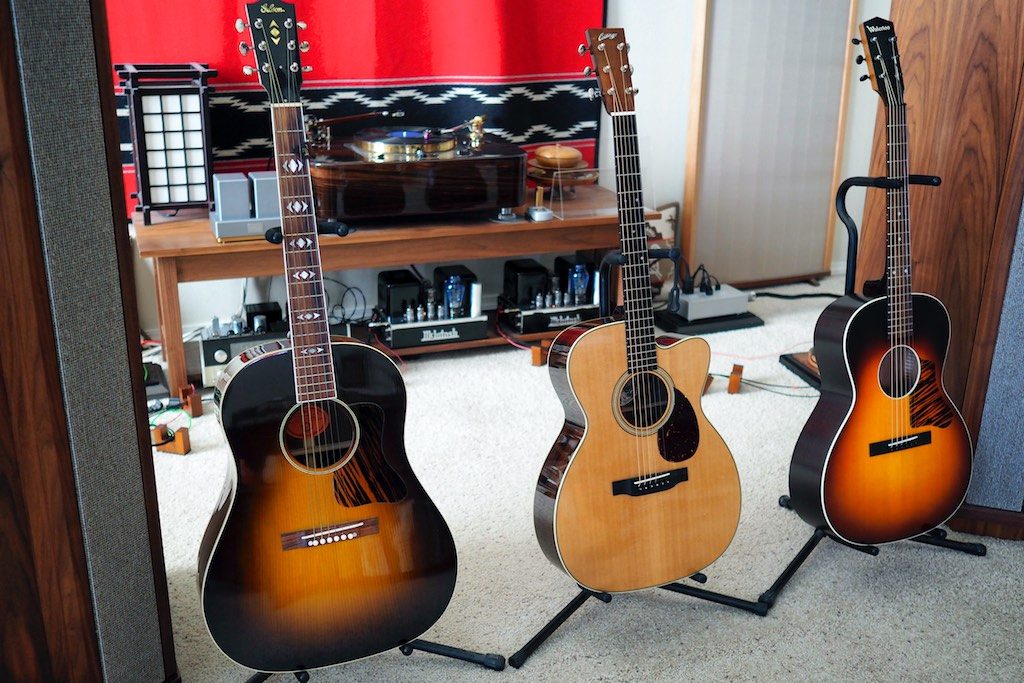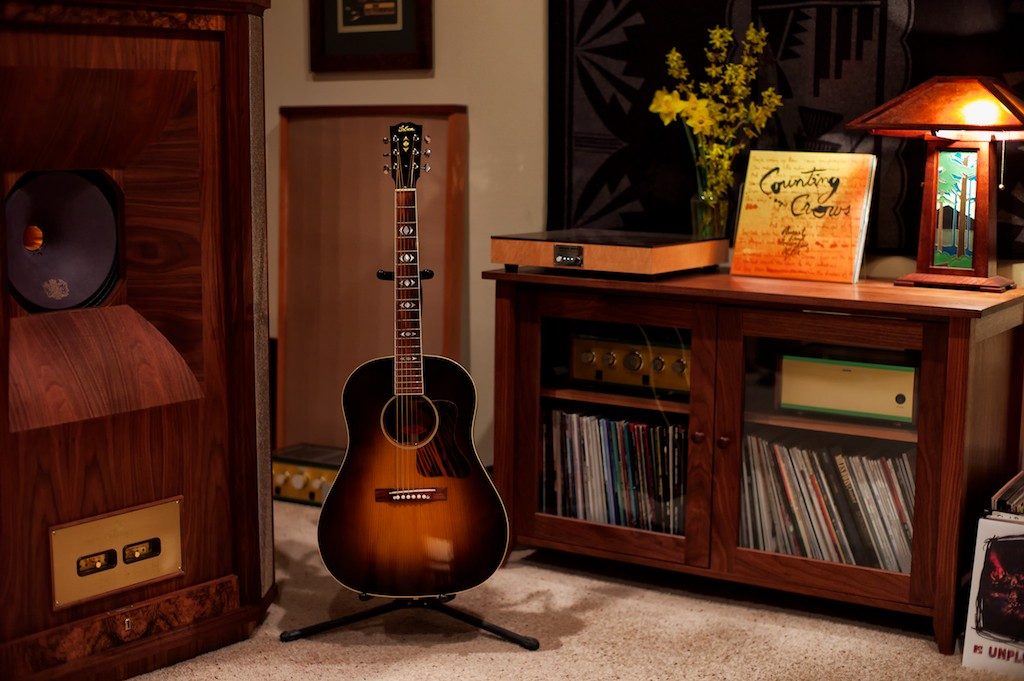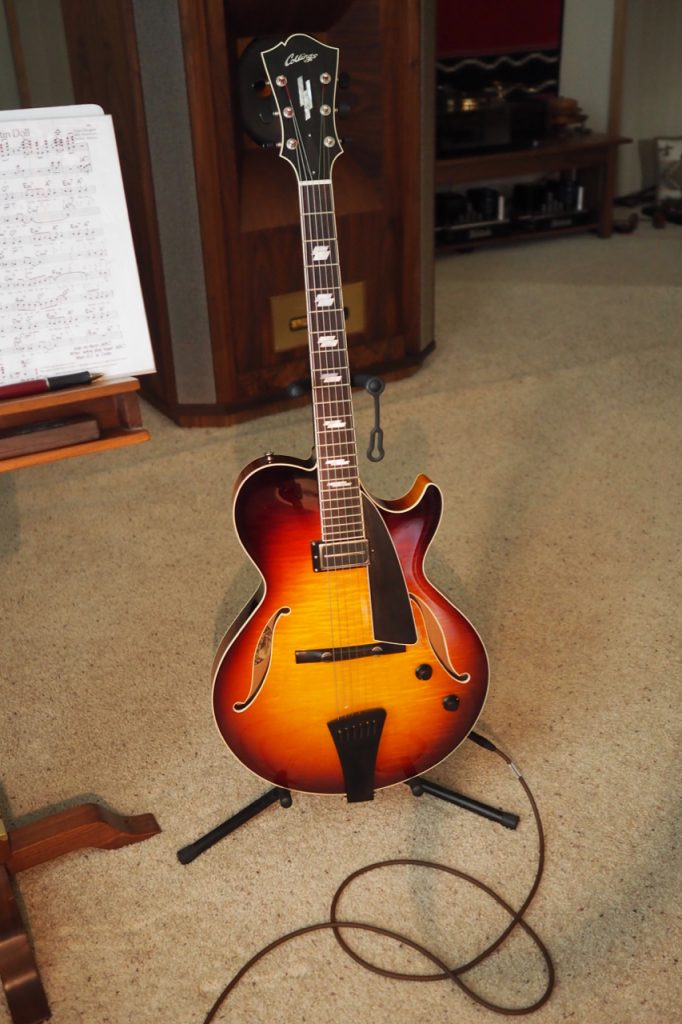When I say “HiFi system voicing” you might wonder what I’m referring to. Basically, I’m referring to what any given hifi system sounds like in terms of its particular blend of musicality and audiophile-style sonics, or its overall sound quality.
The musicality aspect of hifi performance is referring to performance on the basic elements of music in relation to what live music really sounds like. There are specific terms that are used to define the basic elements of music, like timbre (the unique ‘voices’ of instruments), tone color (chordal variations resulting from adding additional pitches to three tone triads), melody (a combination of pitch and rhythm in sequences that are musically pleasing, or more simply, the tune you ‘whistle while you work’), harmony (treble & bass accompaniments to the melody), rhythm (the steady beat that determines the tempo), tempo (speed), and dynamics (variations in loudness), for example.
When I refer to “audiophile-style sonics” I’m referring to how a system performs related to reproducing the non-musical artifacts of the recording process, like transparency (the ability to aurally ‘see’ into the recording), resolution (the amount of detail in the audio signal that is audibly presented), soundstage (the three dimensions of the recorded space in width, height and depth), the soundspace (the acoustic sense of ‘space’ of the recording venue), and imaging (the ability to localize instruments & musicians on the soundstage), for example.
So, when I refer to musicality in a hifi system I’m talking about how close the hifi system comes to making recorded music sound like live music, and when I’m talking about audiophile-style sonics I’m referring to the way a hifi system reproduces recording artifacts encoded in recorded media.
Way back when I was a student in graduate school working on my doctorate in analytical chemistry and performing research, professors stressed the importance of accuracy (a given measurement’s nearness to a known reference) and precision (the closeness of repeated measurements to each other), where accuracy was presented as percent error and precision expressed as a range.
I mention these definitions of accuracy and precision in analytical chemistry to discuss a corollary in music.

Gibson Advanced Jumbo (left), Collings OM2C (middle), and Collings Waterloo WL-14L (right).
Let’s take the timbre of a musical instrument as an example from music. Each instrument has its own unique timbre, which is its unique “voice” in the way it sounds as a musical instrument. The difference in timbre is part of what makes a Stradivarius violin worth millions of dollars, and a student violin worth a few hundred dollars.
Let me use a guitar as a more specific example. For example, a 1939 Martin D-28 guitar is often referred to as the “Stradivarius” year for a Martin D-28. So, in terms of our accuracy analogy, a 1939 Martin D-28 would be the known reference of what the desired timbre should be for any year of Martin D-28.
Now I’m going to complicate things a little bit more, as any musician knows, that reference 1939 Martin D-28 will sound somewhat different when you play it depending on your technique, the brand and gauge of strings you choose to put on it, the relative level of temperature and humidity of any given day, and the size and reverberation time of the space you are playing it in, and so forth.
So, when you listen to your reference 1939 Martin D-28 being played there will be a range (precision) of what its timbre sounds like dependent on other factors, but you will still recognize it as a Martin D-28 due to its overall timbral signature.
In other words, from a timbral perspective, our 1939 Martin D-28 guitar will sound a little bit different depending on other factors, but you will still recognize it as your reference 1939 Martin D-28 when you hear it played.
As an imaginary example, let’s say just for kicks you want to set up a microphone, microphone preamp, and connect it your stereo so you can hear your known reference 1939 Martin D-28 over your stereo. Let’s pretend for the moment that the microphone, microphone preamp, and cables don’t change the sound of your 1939 Martin D-28 at all, even though they would to some extent.
How close does your 1939 Martin D-28 sound acoustically compared to when you play it over your stereo (we’ll assume the same volume for both). It will sound different of course, but does it sound so different that you can’t recognize it as your 1939 Martin D-28? Or does it sound pretty close, within a believable range?
When played over your stereo, if your 1939 Martin D-28 does sound like it’s in the believable range of your reference 1939 Martin D-28 when played acoustically, then your stereo is truly “high fidelity”. That means the reproduced sound from your stereo is very similar to the actual sound of your instrument played acoustically.
Let’s introduce another real-world complication. Let’s say now you’re going to record playing your reference 1939 Martin D-28 guitar through your favorite microphone, mic preamp and cables into a nice analog tape machine like one of Tim de Paravicini’s modified ones, and then play that recording back over your high-fidelity stereo.
How close does your reference recording come to sounding like your reference 1939 Martin D-28 guitar played acoustically?
If the sound of your reference recording reproduced by your stereo sounds in the believable range of your reference 1939 Martin D-28 guitar played acoustically, then the recording chain that reproduced it is high-fidelity.
Given the real-world complicating factors we discussed, I find it rather remarkable that a recording chain and high-fidelity stereo system can produce a believable analog of our reference 1939 Martin D-28 guitar, but the best can do a credible job of it.
Will even the best recording chains and stereo systems be able to reproduce our reference 1939 Martin D-28 guitar exactly as it sounds in life? It is highly unlikely, which is the whole point of our little thought-provoking exercise.
I used the example of a single instrument – an imaginary reference 1939 Martin D-28 guitar – to get the point across, but often there are multiple instruments and vocals which makes it even more challenging to for a recording chain and stereo system to sound like the real thing.
The reality of our hobby is that all recorded music media are going to deviate somewhat from the actual sound of a live performance to some extent, so our challenge as audio enthusiasts becomes one of whether or not our stereo system can reproduce that recorded music media of varied quality in a believable range of sounding like the real thing.
I’ve described high-fidelity as reproducing recorded music in a believable range of sounding like the real thing.
But let’s back up for a moment. What if a stereo system fails the high-fidelity tests described above?
What then? Can it still be considered high-fidelity? Probably not.

My Gibson Advanced Jumbo guitar with Adirondack spruce top, and Brazilian rosewood back & sides.
I’ll give you a real-world example about the time I visited a well-known reviewer and listened to his stereo system with him, which altogether was quite a fun time. I had with me Jorma Kaukonen’s album Blue Country Heart, on which Jorma played the same guitar that I owned myself at the time, a Gibson Advanced Jumbo from Gibson’s Custom Shop, a flat-top steel string guitar.
That recording was produced by Yves Beauvais, who has won many awards over the years for his prowess as a producer, and who also enjoys restoring vintage vacuum tube hifi gear for us hifi nuts. I’ve owned several of Yves restored McIntosh’s, and he does a beautiful job on those too.
Because of Yves’ track record, I had a fair amount of confidence that the Gibson Advanced Jumbo that Jorma played on Blue Country Heart was indeed high-fidelity, and being well acquainted with how a Custom Shop Gibson Advanced Jumbo sounds in life it was an excellent reference for me to judge the fidelity of a stereo system.
The reviewer’s very expensive and well-known reference system failed the high-fidelity test miserably, making the Advanced Jumbo on Blue Country Heart sound like a nylon string guitar, and was not even close to being in the believable range of what an Advanced Jumbo can sound like.
So, could the expensive stereo system that he used for reviews be considered to be high-fidelity? Not really.
But is that important? Well, for a person listening to music for the fun of it, it probably doesn’t matter, as long as he enjoyed the way it sounded.
To be fair, on music that I was unfamiliar with the system actually sounded quite beautiful and engaging.
Even though his stereo system wasn’t high-fidelity, its euphonic presentation was enjoyable to listen to unfamiliar music with - a conundrum we will explore in a future installment.
As an audio reviewer that is a little more problematic, as it may color perceptions of other equipment being reviewed, making it more challenging to meaningfully assess whether its high-fidelity.
There is a lesson to be learned in that example, however. Learning to play a musical instrument yourself, and listening to live music generally, will much better prepare you to understand what is going on with the performance of your stereo, and give you the ability to hear whether your stereo system is doing a creditable job reproducing the actual timbre, tone color, melody, harmony, rhythm, tempo, and dynamics of music.
That way you too can more easily answer the question of whether your stereo system possesses a believable range of high-fidelity with respect to music.
Personally, I want my music to be reproduced within a range of believable high-fidelity, but if you don’t, that’s ok too.
In Part 2 of my musings on high-fidelity, we’ll explore the audiophile-style sonics side of the equation, and see how that fits into the high-fidelity reproduction of music.

Collings Eastside Deluxe LC jazz guitar.
Ok, that's all for today, as I think I want to go play my Collings Eastside Deluxe LC guitar for a while.
As always, thanks for stopping by, and may the tone be with you!





























